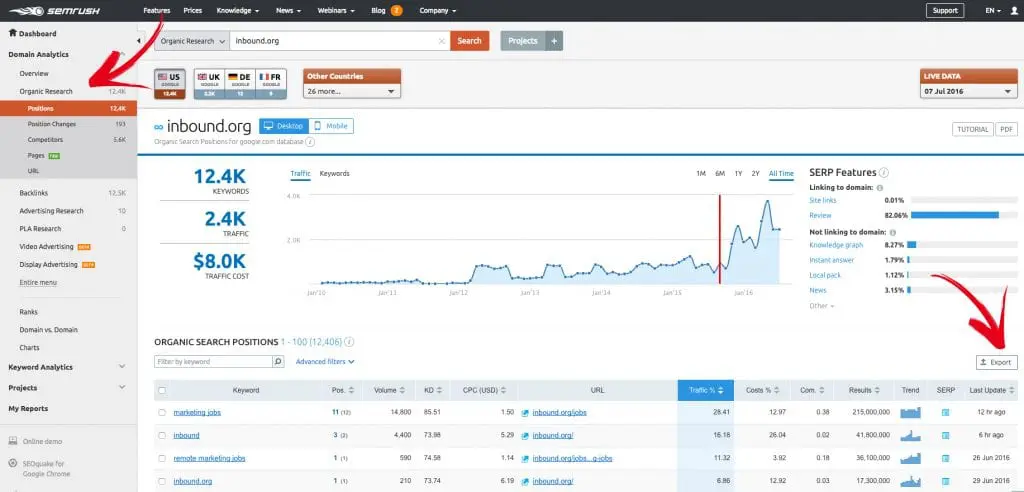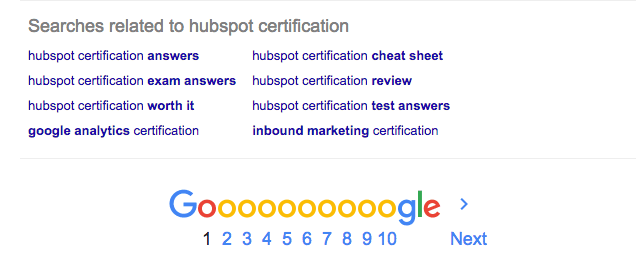HOW TO GO ABOUT DOING KEYWORD RESEARCH

by Alicia Kan
Everyone always asks a digital agency about their keyword research process. The truth is that there are as many techniques as there are ways to take your coffee: Literally hundreds, and no way is right or wrong.
At Globe Runner, we’ve got a keyword research framework that everyone has customized with their favorite tools and resources. Use it to build your own process for your own purposes, and keep it flexible enough to accommodate any new keyword research developments that come along.
Why conduct keyword research at all?
Because skillfully incorporating search terms your target audience is using to find your products or services increases the likelihood of their finding you. Whether you’re launching a new website, aiming to grow your blog readership or wanting to increase your social media followers, doing keyword research helps to make your activity more focused and strategic.
Step 1: Do baseline and gap analyses
If you are working on improving your website, what does the current situation look like and where would you want it to be? Start with how many keywords the site is actually ranking for. Create a spreadsheet to keep track of all the terms, and to give you a firm idea of how close/far you are to your goal.
Each section of the site should have a tab in your spreadsheet. For example, if you have a fashion e-commerce site, have a tab for each category of clothing, e.g. tops, bottoms and shoes. Each tab will have multiple types/variations of keywords. Tops might have t-shirts, tank tops, blouses and so on.
Keeping a spreadsheet not only organizes your activity but allows you to break down the job in manageable chunks. It also gives you a sense of progress as you complete each section.
Step 2: See how you stack up against the competition
After you’ve assessed where you are and where you want to be, it’s time to look at the competition. What keywords are they ranking for?
Use SEM Rush to plug in your site as well as those of a few worthy competitors. With SEM Rush you get a better idea of what your site and those of your competitors are ranking for and how they’ve been affected by Google’s algorithm updates over the years.
Under the ‘Organic Research’ tab, find the ‘Positions’ menu (see red arrow in our example using Inbound.org). You’ll see a list of keywords as well as a graphic showing historical data. Export the organic positions data (where the other red arrow points to). This way you get the ‘money terms’ only.

Once you’ve exported the list, delete all columns except for these:
- Keyword
- Position
- Search Volume
- URL
- Competition
- Number of Results
Sort by Search Volume – Largest to Smallest.
Step 3: Get creative — find suggestions
Use the keywords you gathered and plug them into Google for it to auto-suggest related terms. You’ll see several recommendations that users might be more apt to choose over their original search term. We’re using one of the terms that Inbound.org is ranking for on page 1, and that’s ‘hubspot certification’.

Pull terms you don’t have in your spreadsheet and add them to the relevant tab. You’ll also see a similar list of suggestions at the bottom of the search page.

Rather interesting how ‘exam answers’ and ‘cheat sheet’ are popular related searches 🙂
Google’s auto-suggest feature is just one tool to use in digging up other related keywords but there are more choices out there, such as:
Google Keyword Planner. Obviously where everyone starts. ‘It allows you to easily organize keywords and download them in a format that can be imported into Adwords Editor.’ – Katy
Keywordtool.io. ‘It lets you see what kind of questions people are asking.’ – Jenna
Hashtagify. ‘Great for finding popular terms on social.’ – Lauren
Keyword Shitter (yes, it exists). ‘Easy to use; no fluff.’ – Zain
As for myself, I like using different tools depending on the situation. Moz’s relaunched Keyword Explorer has at least two billion keywords to nerd out to — this Reddit thread is a great conversation between Russ, the developer who worked on it, and members of the SEO subreddit. Google Trends is particularly useful for determining seasonal content — enter a search term and it’ll show search trends over time and related terms at the bottom of the page. Spyfu is worth its weight in gold when it comes to PPC and beyond. I’ve used competitors’ best performing ads to extract keywords for web copy for instance.
Don’t forget too that sometimes you can find gems closer to home. If you’ve got Google Search Console all set up, head over to the ‘Search Traffic’ tab and down to ‘Search Analytics’. You can filter Queries by ‘how’, ‘why’ and other qualifiers in order to see what questions people are typing into the browser.
Step 4: Test your terms
By now, you should have a dizzying abundance of keywords. It’s time to narrow them down to the best ones.
Enter the keywords you’ve gathered into Google’s Keyword Planner — click the ‘Keyword Ideas’ tab below the bar graph to find exact search volumes for the terms you entered. Below it you will see several keywords similar to what you entered that would be good candidates as well. Look for keyword opportunities with high search volumes and low to medium competition that may not have been targeted previously.
Once you’ve narrowed down the list, enter them into the Moz Keyword Difficulty Tool to determine how competitive the terms are. The difficulty will be expressed as a percentage; the higher the percentage, the more competitive the term will be.
Have thoughts on Grep Words, Top Visor and other new(er) keyword research tools? Know of any other resources? Add them to the comments below.
Photo of antique keys by Sergio K via Flickr


















